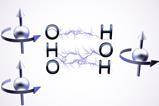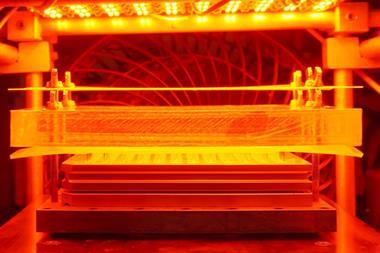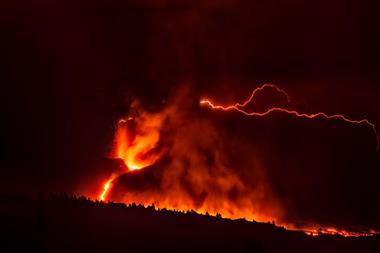A shockingly efficient way of pulling nitrate from thin air has been developed by researchers in China. The electrochemical process could enable a less energy-hungry way to produce agricultural fertilisers.
Nitrate (NO3-) has a range of uses from fertilisers to pharmaceuticals and is indirectly derived from the Haber–Bosch and Ostwald reactions, energy-intensive industrial processes. However, finding a sustainable production method that doesn’t require high temperatures and pressures has proven difficult.
Kai Dong, the study’s lead author who is now at Adelaide University, Australia, says his interest in exploring a more sustainable way to oxidise nitrogen using renewable electricity was sparked by the hefty environmental drawbacks of traditional methods. ‘These traditional methods require high energy input and result in significant greenhouse gas emissions due to their reliance on high temperatures and pressures,’ Dong says.
Nitrogen’s highly stable triple bond requires immense energy to break. In the Haber–Bosch process, for instance, nitrogen and hydrogen gas are forced to react over an iron catalyst at temperatures of around 400–500°C and pressures of 150–300 atmospheres, to form ammonia. Similarly, in the Ostwald process, ammonia is oxidised to nitric oxide over a platinum or rhodium catalyst at scorching temperatures of around 800–900°C.
‘That’s where electrochemical nitrogen oxidation comes in,’ Dong says. This approach to nitrate synthesis is not new but has recently emerged as a sustainable strategy for nitrogen fixation. It involves applying an electric current or potential difference between electrodes to generate reactive oxygen species, facilitating the oxidation of nitrogen to nitrate at room temperature and pressure.
However, the reaction is plagued by a competing oxygen evolution reaction, where oxygen gas is generated alongside nitrate, reducing efficiency, contaminating the nitrate and degrading electrodes over time.
Dong and his team have a solution though. ‘We utilise hydroxyl radicals generated from hydrogen peroxide decomposition as an alternative source of active oxygen for nitrogen oxidation,’ he explains. ‘This not only circumvents the competition from the oxygen evolution reaction but also contributes to a more efficient and sustainable process for nitrate synthesis.’
Leveraging an electrolytic cell designed specifically for nitrogen oxidation and a two-electron pathway to reduce oxygen to generate hydrogen peroxide, Dong says they were able to streamline the process. The team established a standardised testing protocol to guarantee the purity of their nitrate production, minimising contaminants such as ammonia and nitric oxide.
According to Yifu Yu at Tianjin University, China, who was not involved in the study, developing standardised testing protocols is key to advancing the field. ‘Several elements should be considered, including … the purification of reactants, the sealing of reactors, the avoidance of nitrogen-containing chemicals in catalyst preparation,’ he says.
Dong says his team considered these factors while developing the process and also employed advanced in situ techniques to lower detection limits into the femtomole range and delve deeper than before into the mechanism of dinitrogen oxidation. ‘Furthermore, we conducted an economic feasibility analysis, considering various factors such as profit margins, prevailing renewable energy electricity prices and device efficiency,’ he continues. ‘Profitability under direct use of commercial electricity poses challenges, requiring a Faraday efficiency [a measure of the effectiveness of the electrochemical reaction] exceeding 90% at high current densities. However, by harnessing renewable electricity, profitability becomes achievable with current catalytic capabilities, albeit at a lower scale.’
But there is a reason this type of technology has been slow to get off the ground. ‘Presently, the yield is too low per unit time and volume,’ says Yu. ‘It means that we have to increase the volume of the reactor. As a result, the fixed asset investment is too high. The key is to increase the current density of electrochemical nitrogen oxidation, while maintaining the selectivity. This is difficult owing [to] the trade-off relationship between current density and selectivity.’
While Dong is optimistic, he concedes that ‘further research and development efforts are needed to overcome existing challenges and realise its full potential on an industrial scale’.
The spelling of the Ostwald process was corrected on 1 August 2024
References
K Dong et al, Nat. Synth., 2024, DOI: 10.1038/s44160-024-00522-8

















No comments yet